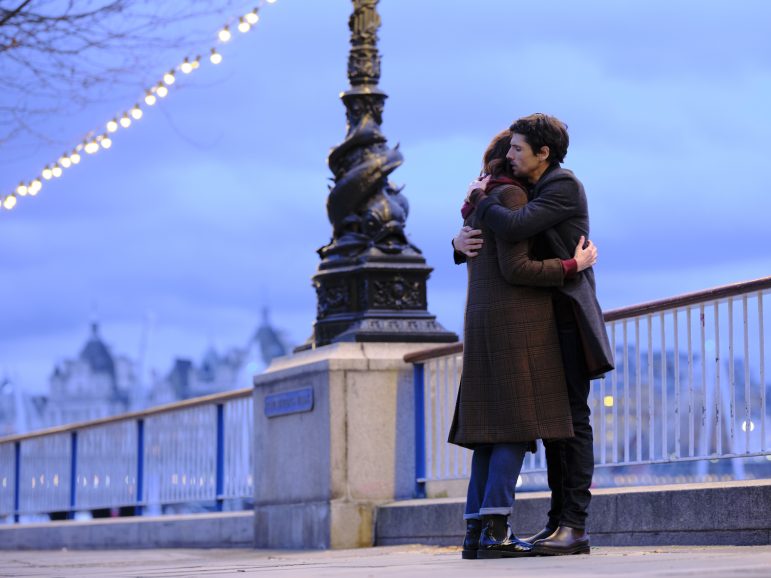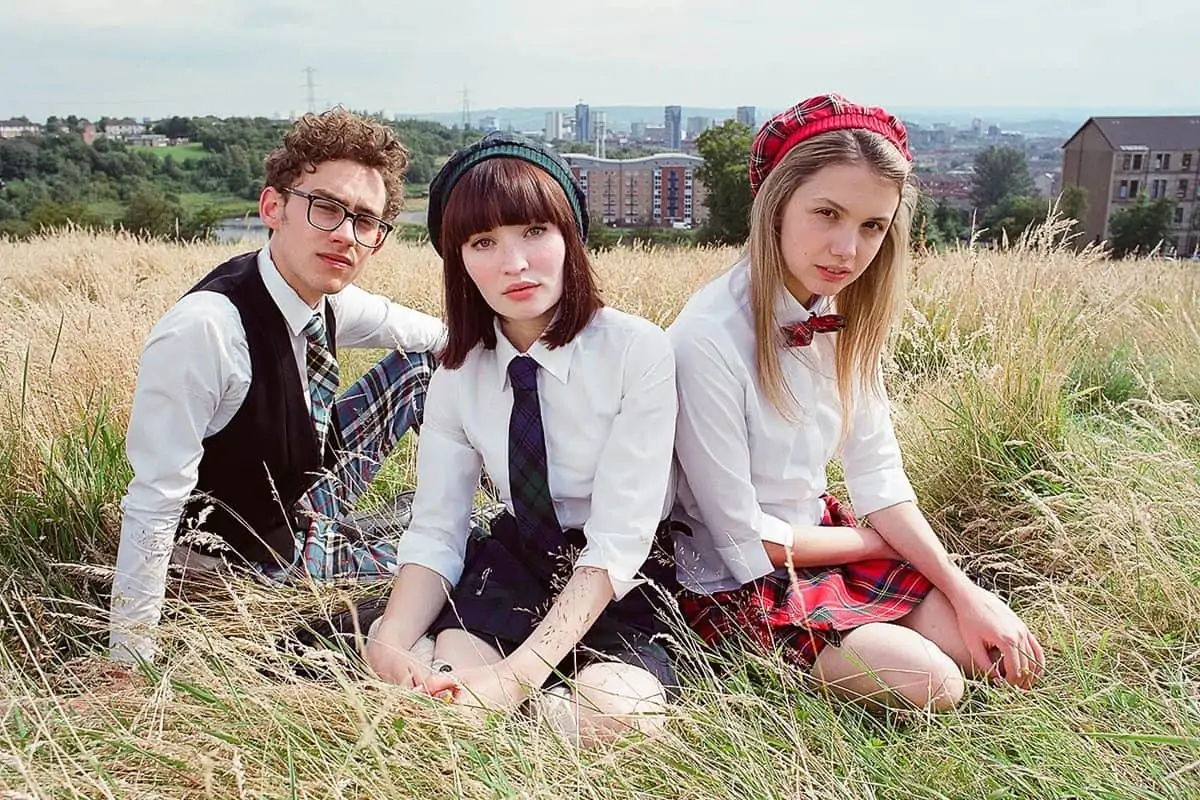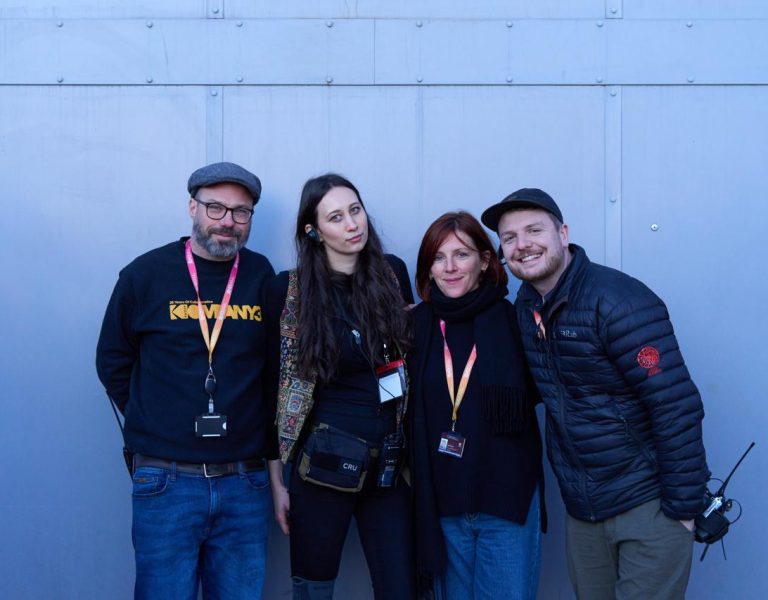Shifting perspectives
Matt Gray BSC tells us about the power of the camera in manipulating perspective and challenging preconceived notions in his lensing of twisty legal thriller The Killing Kind.
The latest TV project for award-winning DP Matt Gray is Paramount+’s The Killing Kind. Gray reflects on setting the look with director Zara Hayes, playing with a range of lenses to aid the storytelling, and his advice for aspiring narrative DPs.

How did you get involved with The Killing Kind and what appealed to you about lensing this series?
The Killing Kind is an exhilarating contemporary thriller that also weaves a complex tale of love. It has been adapted by director Zara Hayes and writer Jonathan Stewart from the book by Jane Casey and produced by Eleventh Hour Films.
After reading episode one, I recognised the potential of this project to delve into the thought-provoking themes presented in the story and it felt creative and original.
Tell us about your collaboration with director Zara Hayes – this wasn’t your first time working together?
I had the pleasure of collaborating with Zara Hayes on Showtrial in 2021, and it was a wonderfully creative experience, so when she approached me to join her on The Killing Kind, I was absolutely thrilled.
Zara is a talented individual, and working alongside her is always a delight, her ability to bring ideas to life and her unique vision contribute greatly to the success of any project she undertakes.
I was really pleased to be a part of this project.
How long was prep and what did this entail for The Killing Kind?
I was fortunate to have ample prep time for my involvement in The Killing Kind, which proved to be invaluable. This allowed me to actively participate in crucial tasks such as location scouting and camera testing. Given the tight budget of the project, this extensive preparation period not only enabled me to address the technical requirements effectively but also facilitated detailed discussions with Zara regarding the script. These discussions were instrumental in establishing a coherent vision for the camera’s role in the project, in particular with regards decisions about perspective and being committed to subjectivity and our main character’s experience.

Tell us more about your discussions with Zara about the look and mood for the show.
Zara and I were involved in establishing the series, shooting episodes one, two and three, and we started shooting in early January 2023.
Our initial discussions revolved around establishing the visual aesthetics and atmosphere that would effectively convey the themes and ideas of truth, subjectivity, constructed reality, trust and obsession.
Our focus was on utilising the camera as a powerful tool to manipulate perspective, challenge preconceived notions, and evoke emotional responses. In episode one the main protagonist (Ingrid)’s safe, established worldview gets disrupted as a result of her past coming back to haunt her. We moved from established rhythms and adopted a searching handheld camera style that created tension and instability.
The Killing Kind is a narrative that encapsulates the elusiveness of truth, as it continuously remains just beyond the audience’s grasp, so we tried to set up questions with the camera style and discover the information with Ingrid.
As the story progresses and intensifies, the camera maintains a close proximity to Ingrid, the central protagonist. This deliberate choice of a singular perspective engenders a palpable sense of tension, subjectivity and unpredictability for the viewers.
It helps to establish an intimate connection between the audience and the main character. This deliberate choice became a suspenseful technique to heighten the audience’s engagement. The narrative gradually builds tension, withholding crucial information and unveiling it in a calculated manner.
Lighting and operating allowed me to work closely with the actors and be instinctive about the way the camera moved and engaged with the story.
We explored the potential of utilising lighting and colour grading to evoke specific moods and enhance the thematic elements. In our episodes, fire colours from the flashback sequences were twisted to work with other key scenes, including the love scenes, and allowed us to unify and intensify emotions for these pivotal scenes. The fiery hues served as a visual representation of the characters’ internal conflicts and the intensity of her emotions. We were keen for The Killing Kind to be visually sumptuous and bold without being overly stylised.

Which camera and lenses did you choose for the show and why?
We selected the ARRI Alexa Mini LF camera along with a set of Angénieux Optimo Primes, Kowa’s anamorphic lenses, and a single Petzval Prime Lens for the project. The decision to shoot in a 2:1 aspect ratio and utilize various lenses was driven by the desire to establish distinct emotional connections within the story.
Each lens possesses its own unique personality and tone, allowing us to visually convey different moods and atmospheres throughout the narrative. The ARRI Alexa Mini LF camera provides exceptional image quality and versatility, ensuring that our footage is captured with the utmost precision and detail.
The Angénieux Optimo Primes offer a superb optical performance, delivering sharpness and clarity while maintaining a natural and cinematic feel. These lenses allowed us to capture the essence of the characters and their surroundings, enabling the audience to connect with the story on a deeper level.
Incorporating Kowa’s anamorphic lenses added a touch of visual flair and a sense of expression to our shots. The anamorphic aspect ratio and characteristic lens flares helped create a distinct cinematic aesthetic, enhancing the emotional impact of key moments in the narrative.
Lastly, the inclusion of a single Petzval Prime Lens added a distinctive artistic touch to specific scenes. Known for its distinctive swirly bokeh and vintage look, this lens imparts a dreamlike quality, adding an extra layer of visual storytelling to the project.
By carefully selecting these lenses and shooting in a 2:1 aspect ratio, we aimed to create a visually compelling and emotionally engaging experience for our audience. The combination of the ARRI Alexa Mini LF camera, Angénieux Optimo Primes, Kowa’s anamorphic lenses, and the Petzval Prime Lens allowed us to effectively convey the different tones and personalities inherent in our story.

Could you take us through some of the key locations for your episodes?
The Killing Kind is set in London, although it was filmed in the Bristol. Our primary challenge was to effectively convey the story’s essence through distinctive and dramatic location choices, while ensuring that the sense of London was maintained whenever possible. Our objective was to establish a stylish yet grounded tone for the series, allowing the audience to fully immerse themselves in the world of the narrative and develop a sense of trust in its authenticity. While the story frequently presented us with situations that questioned the validity of the facts, we deliberately aimed to avoid undermining the audience’s confidence in the narrative.
Were there any new tools or techniques that you used on your block?
We didn’t have the luxury of Steadicam throughout the production, so we carried the DJI Ronin 4D and made good use of it when we wanted the camera to flow smoothly and feel less present.
What was your overall approach to lighting The Killing Kind?
I took a heightened naturalism approach to the lighting on my episodes. I was keen to have a grounded style to make sure it felt real and truthful, but I was also keen to use strong singular colour tones to signify emotion and threat where possible and unify certain emotional aspects.

What was the trickiest scene or location to light?
The rainy night London street was one of our trickiest scenes to shoot over two very cold evenings in January. The technical challenges were primarily practical, as we had a large area cover by rain effects. It involved stunt work and a lot of detailed storytelling and multiple perspectives. This was a major part of the story that was revisited again and again. Along with the flashback of the burning house which was a combination of location and fire set.
We had a fabulous team on The Killing Kind and our location manager Tim Faulkner and our amazing production designer, Eryl Ellis, and his team did a wonderful job creating these worlds.
Who did the grade?
Paul Harrison at Residence Pictures did a fabulous job of grading my episodes. Where he could, Paul worked closely to the established looks created by onset DIT John Miguel King.
What aspect of your work on The Killing Kind are you most proud of?
I’m most proud of my close involvement in the storytelling. Lighting and operating allows me to keep close to the story and try and bring as much of myself to bear on the clarity of the narrative using camera movement, lens choices and lighting.
Are there any crew members not already mentioned whose work you’d especially like to highlight?
The camera team on The Killing Kind were exceptional, especially Martin Payne, my regular focus puller. He has such a sensitivity to the material and a clear and professional attitude.
Simon Tanner, my gaffer, did a wonderful job of understanding my requirement and supporting our storytelling approach. He introduced me to some interesting new tools and pulled together a great team.
What’s your best piece of advice for up-and-coming DPs hoping to make their mark in TV drama?
Keep shooting your own work in whatever form, develop your eye and your voice. Learn to collaborate and focus on storytelling. Study your craft but enjoy the journey. Be a student of TIME, it is a component of story and a creative commodity.
Matt Gray BSC is represented by Casarotto Ramsay & Associates.














